35mm
Latest
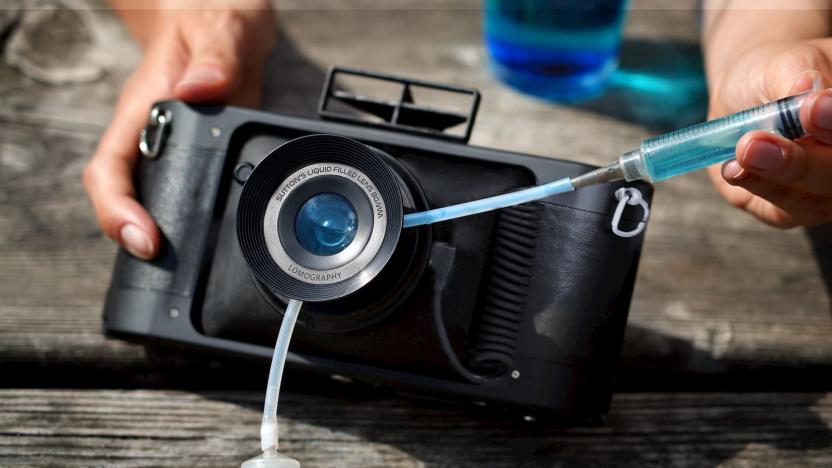
Lomography's new 35mm camera has a lens you can fill with liquid
It looks like a fun way to manually add vintage aesthetics to panoramic shots.
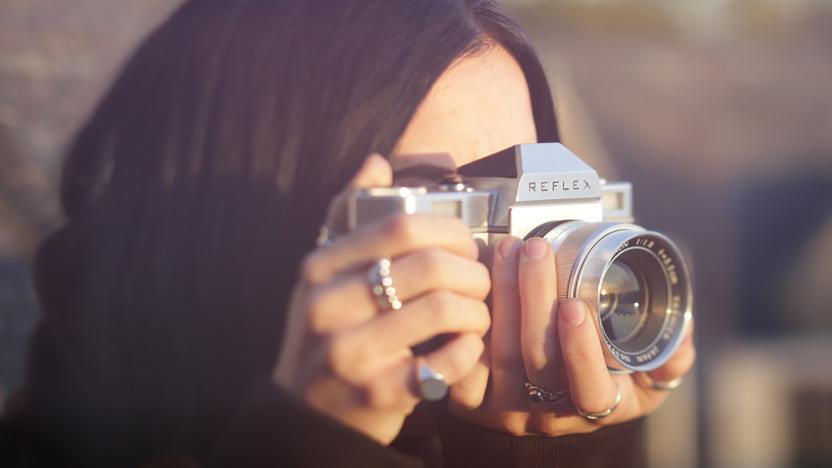
The Reflex 1 is the first manual film SLR in decades
Written off not long ago as dead technology, film has recently been embraced by instant photographers and filmmakers like Quentin Tarantino and Christopher Nolan. A company called Reflex has capitalized on that trend by launching the manual focus, 35mm Reflex 1 SLR, "the first newly designed manual SLR system in over 25 years."
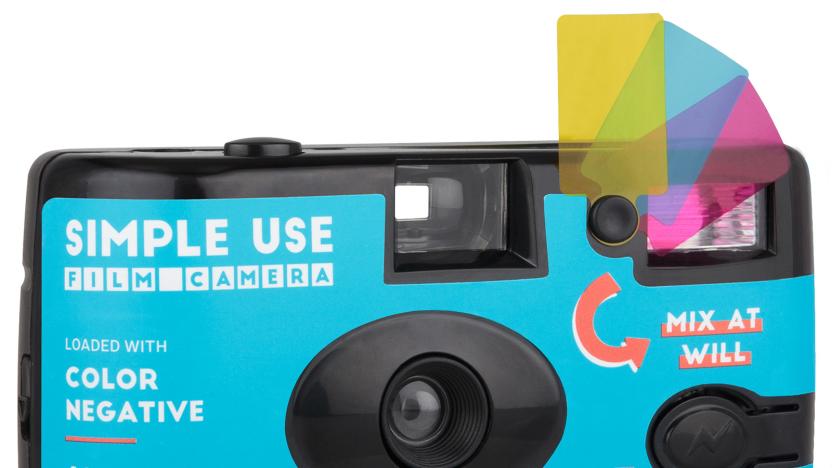
Lomography's super-cheap film cameras look like disposables
Thanks to the smartphones in our pockets, we all have a basic understanding of digital photography, even if we don't own a fancy DSLR. But this casual familiarity can make delving into analog, film shooting a bit daunting, at least initially. Champion of film Lomography has made exploring the 35mm format that much more accessible today, though, launching a trio of super-cheap cameras, preloaded with its dreamy films, that even the most inexperienced of photographers can easily get to grips with.

Kodak brings back classic Ektachrome color reversal film
Kodak Ektachrome color-positive film, beloved by portrait photographers and indie filmmakers alike, is rising from the dead. Kodak Alaris will start selling the classic 135-36x 35mm and Super 8 movie films in the fourth quarter of this year, the company said in a statement. The stock (also called reversal or slide film) was discontinued in 2012 and is known for its extremely fine grain and saturated colors. It's also cherished by indie filmmakers for its ability to be "pushed," producing an artistically grainy effect (see the trailer for Buffalo 66, embedded below).
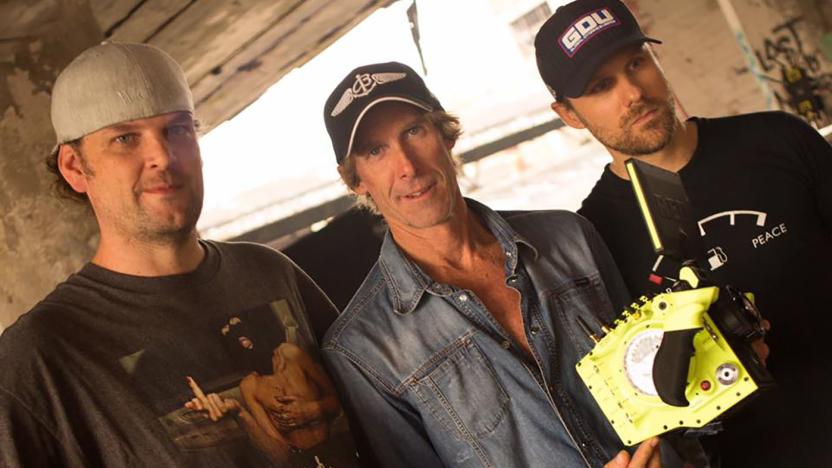
RED reveals a smaller 8K sensor for its Weapon camera
RED has revealed a new sensor called the "Helium" for its ultra-high megapixel 8K Weapon cinema camera. The chip will be 29.9mm wide (slightly bigger than Super-35), considerably smaller than the company's 40mm VistaVision sized 8K Dragon sensor. It still has the same 8,192 x 4,320 pixel count, however, giving it a pixel pitch of a miniscule 3.65 microns. RED President Jarred Land says the sensor is "way ahead of schedule," and will be available to buyers of its $60,000 Weapon camera "in the coming months."
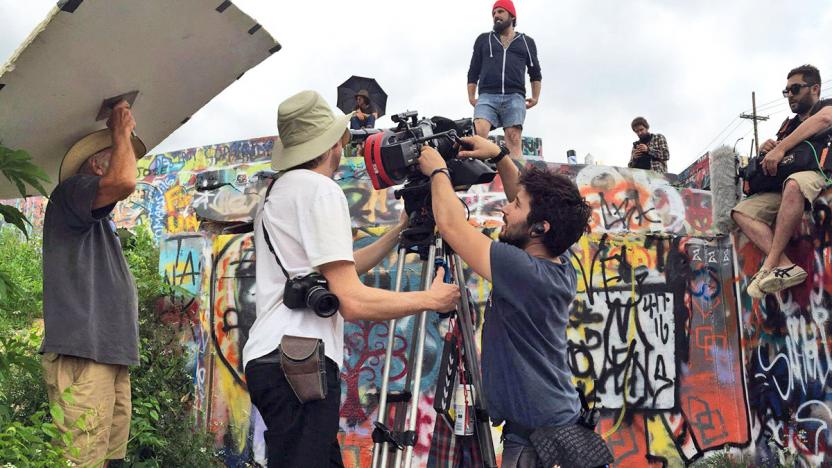
Kodak is giving free film to Kickstarter directors
Crowdfunded filmmakers will be able to shoot on film for a lot less money thanks to a partnership between Kodak and Kickstarter. Kodak says it will provide free 35mm or Super 16mm film stock for select projects, up to a total of around $20,000 for 35mm film, depending on the total budget. Beyond that, the company will provide discounted film and mentoring for packaging, financing and sales strategies. The choice of filmmakers appears to be at Kodak's discretion, but so far the company has picked several Kickstarter productions that will launch this spring.

The last two 'Star Trek' films are coming home in 4K June 14th
While you and BB-8 cuddle with a 1080p Star Wars: The Force Awakens Blu-ray, Paramount is readying its first Ultra HD Blu-ray releases with Star Trek and Star Trek: Into Darkness. We're not sure that the extra resolution, HDR or Atmos will actually make either film better than you already thought, but they will certainly be better looking and sounding than ever. According to the press release, both have been digitally remastered with new 4K UHD transfers, unlike mastered-in-2K movies like Mad Max: Fury Road. If you're curious, a list of mastered in 4K (or higher) Ultra HD Blu-ray discs is being maintained here.
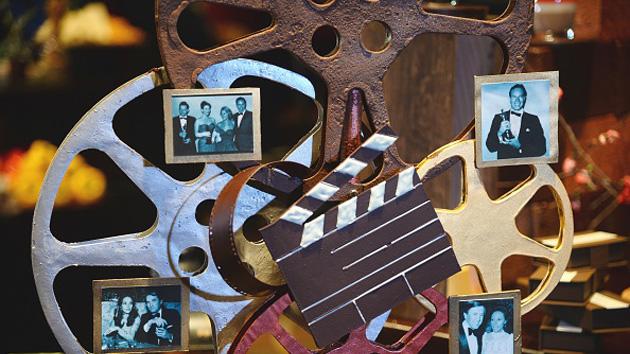
Kodak and movie studios forge a deal to keep film alive
Good news, die-hard aficionados of movies on film: those reels will stick around for a while yet. Kodak has put the finishing touches on a deal with the six big Hollywood studios (Disney, Fox, NBC, Paramount, Sony and Warner Bros.) that will maintain a steady supply of film for movie and TV directors that want to keep using the classic format. The exact terms aren't public, but it wouldn't be surprising if Kodak had the studios over a barrel. When high-profile directors like Martin Scorsese and Quentin Tarantino virtually insist on film, it's hard to say "no" -- you may as well be telling them to take a hike if you make them go digital. This pact won't stop the gradual death of film in theaters, of course, but creative types can take comfort in knowing that celluloid's hard-to-replicate qualities aren't going away any time soon. [Image credit: Robyn Beck/AFP/Getty Images]

Visualized: Canon 35mm CMOS sensor captures fireflies in HD (video)
Canon impressed us back in March when it unveiled its 35mm full frame CMOS sensor, which is capable of recording footage in extremely low-light situations. This time around, the company set its sights on the Yaeyama-hime fireflies on Ishigaki Island off the coast of Japan. Shortly after sundown, the Canon team managed to capture a forest full of lightning bugs in full HD in near-dark settings. To watch the video in all its bioluminescent glory, mosey on past the break.

Lomography Smartphone Film Scanner an easy way to digitize 35mm negatives
Lomography has made a business out of trying to keep some of the old film technology alive, and they've been doing it for 20 years. To bridge the gap between the film and digital ages, they've come up with the Lomography Smartphone Film Scanner (US$59). This post probably won't make sense to those of you who have grown up with digital photography, but there used to be a day when cameras used this stuff called "film." You'd stick it into your camera, take photos, then have them "developed" so that you could see your pictures on "prints." When you'd pick up your envelope of prints, the place where you got your photos developed was always kind enough to include your "negatives," which were the processed film strips. Want another print? Drop off the negative with your friendly neighborhood processing shop, and you'd get the print later -- for a fee, of course. The Smartphone Film Scanner is a tiny lightbox with a feed mechanism for rolling through those strips of negatives. Put your iPhone (or other smartphone) on top of the device, align your phone's camera lens with the hole on the top of the device, fire up the free Lomoscanner app and start capturing images from the negatives. Note that you can also scan positive (slide) 35mm film, but unfortunately there's no way to scan mounted slides. You'll need to put a pair of AA batteries in the scanner before starting. I used my Apple rechargeable AAs for this, and they worked just fine. You'll also want to remove the Lomokino adapter before scanning 35mm film -- it's used for scanning Lomokino movies, which are 144-frame 35mm movies shot with a special camera available from Lomography. Turn on the backlight, fire up the Lomoscanner app and then feed one end of the 35mm film strip into the slot marked "Insert film here." Turn the little knob to feed the negative until it's framed properly, and then tap the shutter button to take your photo. Turn the knob again, take another shot, and so on until that shoebox full of negatives has been scanned. If you have Photo Stream set up on your iPhone, all of those scanned images will show up in iPhoto or Aperture, ready for additional touch up. There are built-in app adjustments for exposure, contrast and color temperature, so if your negatives have faded, you can begin the process of making them look brand-new within the Lomoscanner app. Me? I think those slightly-off hues can be charming; after all, 5 billion Instagram users can't be wrong. You'll notice that the images seem grainy, but that's an artifact of the original film, not the scanning process. %Gallery-195200% A lot of users have given the Lomoscanner app negative reviews due to crashing; I only experienced that when I tapped the button to go into my Photo Library. My main concern was that images that were taken vertically on the film strip were cut off when zoomed in. I quickly learned to leave those images zoomed out, and to then use iPhoto to crop out the extraneous space around the images. The Lomography Smartphone Film Scanner is a great way to digitize those 35mm film strips and get them into your Photo Library. If Lomography ever comes out with a version for scanning the thousands of 35mm slides I have, I'll be the first to buy it. Giveaway And now, courtesy of TUAW, Photojojo and Lomography, we're giving away a Lomography Smartphone Film Scanner. Here are the rules for the giveaway: Open to legal US residents of the 50 United States, the District of Columbia and Canada (excluding Quebec) who are 18 or older. To enter, fill out the form below completely and click or tap the Submit button. The entry must be made before August 3, 2013 11:59PM Eastern Daylight Time. You may enter only once. One winner will be selected and will receive a Lomography Smartphone Film Scanner valued at US$59. Click Here for complete Official Rules. Loading...

Lomography intros Konstruktor: craft your own film SLR for $35 (video)
It's easy to build your own camera if you're determined to capture images on the cheap; it's another matter if you want something just slightly more refined. If that's the case, Lomography has you covered with its new Konstruktor kit. The pack gives DIY types everything they need to build their own 35mm film SLR, including a removable 50mm f/10 lens and customizable panels. There's no control over aperture or shutter speed, but Lomography's retro-inclined crowd will like the quick toggle for long exposure shots. They'll also like the $35 price -- it's possible to buy 100 Konstructors before matching the cost of just one EOS 5D Mark III. Should that kind of math be too much to resist, you'll be glad to hear that the camera is already on sale at Lomography's shop.

Canon sensor records video in very low light, sees movie stars of a different sort
Although there's undoubtedly been improvements to low light videography, it's still difficult or impossible for most cameras to record in near-total darkness. Canon has the solution with a video-only, 35mm CMOS sensor that can keep recording even when there's virtually no visible light at all. The prototype's pixels are about 7.5 times larger than in already light-sensitive DSLRs like the EOS-1D X, letting it get focus with as little as 0.03lux of illumination. The result is more than just the perfect camera for a horror movie -- the sensor can capture the Geminid meteor shower and other astronomical phenomena without special tricks. Canon hasn't said when it might ship a video camera toting the new imaging technology, but it's planning to show the sensor at a security expo this week; we may well see the sensor in the field, even if most of its work happens beyond the public eye.

Sony Cyber-shot RX1 sample images and video
When we first got our hands on Sony's full-frame compact camera, the Cyber-shot RX1, we were allowed to touch it, but we couldn't use it for its stated purpose. Today, however, we got to put its 35mm image sensor and Zeiss Sonnar T* 35mm f/2.0 fixed prime lens to the test at a Sony event in San Francisco. Join us after the break to see a bit more of the City by the Bay and learn how the RX1 performed shooting stills and video.

Nikon unveils lightweight, full-frame D600 DSLR -- hands-on and low-light samples (video)
We've been watching out for the D600 since images leaked a couple of months ago, and today it's been made official: a full-frame DSLR that's priced ever-so-slightly closer to the reach of mortals (read: "high-end enthusiasts") who perhaps can't claim everything off their tax. At just shy of $2,100 (update: €2,150 in Europe), the 24-megapixel camera's US list price is significantly lower than that of the 36-megapixel D800, and undercuts Canon's rival EOS 5D Mark III and Sony's brand new full-frame Alpha A99. What's more, aside from the resolution, you're getting something pretty close to the D800 -- including a weather- and dust-resistant magnesium alloy build, fast Exspeed III processor, and AF that works down to f/8 -- but here it's all contained in a body that sheds a full 15 percent off the D800's weight. It feels great to hold a full-frame DSLR like this, which is barely any heavier or more conspicuous than an APS-C shooter like the D7000. Nikon is also making a big deal out of the fact that the D600 handles wireless transfers and triggers using the new WU-1b widget, which is identical to the familiar WU-1a we reviewed on the D3200 except that it plugs into the camera's USB port rather than the HDMI port. There's an Android app to allow your mobile device to communicate with the camera, and an iOS app is set to land by the end of September. Read on a few more initial impressions and a quick look at the D600's high-ISO performance.%Gallery-165042%%Gallery-165026%

Sony's Cyber-shot RX1 compact camera packs a full-frame sensor, 'fits in your palm' (hands-on)
Would you believe us if we told you Sony packed a full-frame sensor in a Cyber-shot-branded camera? It's true! Say hello to the RX1, a "compact" digital camera for pros that's packing the same 24.3MP Exmor CMOS sensor introduced today with the A99. Calling the rangefinder-esque one-pound shooter small might seem off-base, especially considering the Zeiss Sonnar T* 35mm f/2.0 fixed prime lens protruding from its front, but it's not so huge (3-inches high by 4.5-inches wide) up against its tiny sibling, the RX100 -- taking into account how much larger the RX1's sensor is, well, that's when this editor's jaw basically dropped. While it's not a "pro-NEX" as many had hoped, Sony explained that it chose a fixed lens to avoid the bulk of a lens-mount. We were able to get some eyes-on time with an engineering prototype of the unit, so click past the break for more details, close-ups and a brief video overview. %Gallery-164840%

IRL: Canon Powershot D20, FX Photo Studio and Nikon's 35mm f/1.8G lens
Welcome to IRL, an ongoing feature where we talk about the gadgets, apps and toys we're using in real life and take a second look at products that already got the formal review treatment. It's photo week here at IRL. Turns out, quite a few Engadget editors are in the mood to talk up their shooting gear lately. On the camera side, Edgar recently took the PowerShot D20 on his honeymoon in Jamaica, while Darren's been giving FX Photo Studio a whirl (spoiler: he still prefers Snapseed). And say hello to our new copy editor Philip Palermo, who says if he had to live with just one lens for his Nikon D90, it would be the 35mm f/1.8G.

Snap! camera case for iPhone has working shutter button
Do you use your iPhone like a camera and want an authentic look and feel? Then you should check out the Snap! case from Bitplay. As noticed by Swiss Miss, the case mimics the outer casing of a retro camera and even has a working shutter button. The backside of the case has dials and buttons that match the styling of your typical 35-mm shooter. Thankfully, these decorations won't get in the way of you using your iPhone as a phone. You can grab the Snap! case for US$49.99 from Dynamism, popular online retailer from Japan that specializes in exports. You can check out the camera case in the promotional video below. [Via Swiss Miss]

Lomography LomoKino Super 35 Movie Maker hands-on (video)
"Unique and precious pieces of movie art." That's what Lomography is promising to deliver with the LomoKino Super 35 Movie Maker -- the company's very first movie camera. Announced earlier this month, the LomoKino is hardly a technological game changer. In fact, it's anything but. Much like every other camera to come off of Lomography's assembly line, the Movie Maker is entirely analog. Users must spool their own 35mm film and manually operate the device's crank to capture images at a frame rate of three to five frames per second, with a shutter speed of 1/100 second. From there, you can either send the film off to get developed and digitally formatted, or cut it yourself and scan it into your movie editing software of choice. You won't find any sound, many frills, or, for that matter, a ton of convenience, but that's also the idea -- to return filmmakers to the roots of early silent cinema, with a pared down device that reignites some of the photographic mystery lost with the dawn of the digital age. For those too young to remember the analog era, just think of it as a physical manifestation of Instagram, minus the "insta" part. And the results can be pretty stunning, as many in the Lomography community have already demonstrated with collections of hauntingly silent, washed out shorts. With our curiosity piqued, we decided to stop by Lomography's boutique in Paris to learn more about the LomoKino. Check out our hands-on gallery below, and click past the break for our initial impressions. %Gallery-139288%

LomoKino Super 35 Movie Maker lets you channel your inner Charlie Chaplin for $80
Ever wish you could return to a simpler cinematic era -- one characterized not by 3D graphics and Spielberg, but by silent images and Eisenstein? Well, you can now spearhead the movement yourself, with Lomography's new LomoKino Super 35 Movie Maker. With this device (pictured above), amateur filmmakers can manually produce their own frill-free movies on any roll of 35mm film. All you have to do is load your film into the so-called "magic box," turn the crank and let the LomoKino work its magic. The camera, which boasts a 25mm lens and max aperture of f/5.6, will capture 144 shots on a single roll of film, good for about 50 to 60 seconds of footage. It also supports a wide array of effects, including slide film, color negative, redscale and black and white. Once that's developed, you can run it through Lomography's LomoKinoScope, direct it toward a light source, and watch your homemade Baby's Lunch or Nanook of the North unfold before your eyes. You won't find any sound, special effects, or fancy post-production tools here -- just moving images, plain and cinematically pure. Lumiere enthusiasts can grab one now for $80, or opt for both the LomoKino and the LomoKinoScope, bundled together for $100. For more details, roll past the break for a sample video and the full PR, or get a closer look at the LomoKino in the gallery, below. %Gallery-138276%

Atomos Ninja and Samurai HD video recorder / monitors bring compression jutsu to pro filmmaking
We all drool over the hi-res video shot by cameras like the RED EPIC, but for indie-film types, processing the massive files produced takes a lot of time (and therefore money) and not everyone has an ARRI ALEXA to do native recording compression. Enter the Atomos Ninja and Samurai HD recorder / monitor / playback devices that take your 10-bit video and compress it in Apple's 1080p ProRes QuickTime format to make your post-production life a little easier. The Ninja pulls video through HDMI and deposits it on your choice of 2.5-inch HDD or SDD storage, does playback via a 4.3-inch 480 x 270 touchscreen, and has continuous power thanks to dual hot-swappable batteries (available in 2600, 5200, and 7800 mAh varieties). Meanwhile, the Samurai matches the Ninja's specs, but swaps out the HDMI connection for HD-SDI ports and adds SDI Loop-Through to connect an external monitor, a larger 5-inch 800 x 400 display, and 3D support (if you get two Samurais genlocked together). Both units have FireWire 800 and USB 2.0 and 3.0 connections for offloading your vids. Those with Spielbergian aspirations can pony up $995 for the Ninja right now, or pay $1,495 for the Samurai upon its release this summer.












